Tools @ Home | Kindergarten
Resources to Support Your Kindergartner
Inspiration from Tools of the Mind to support young children’s learning at home.
Note: We recognize that different states are guiding schools in how to support Learning at Home in different ways. If your child is in a Tools of the Mind classroom, your child’s teacher and school will have guidance and materials they may share directly with you, and the ideas here can supplement their guidance.
Show Schedule
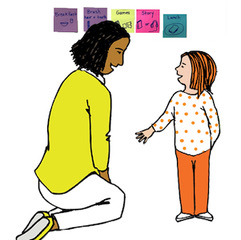 Plan the Day
Plan the Day
Planning before doing is a hallmark of the Tools program. In Kindergarten Tools of the Mind classrooms, children make a daily learning plan and have a weekly learning goal. At home, take time at the start of each day to make a plan. Make a moveable schedule and have your child help choose the order of activities they’ll do (you can download our icons here for your schedule). Download the Learning Plan and ask your child to write a goal for the week. This could be something they want to learn (“I want to learn to read new words”) or a social-emotional goal (“I am going to take turns when I play with my sister”). They can also draw or write one learning activity they want to do each day, and one activity or action they can make to work toward their learning goal.

Weekly Learning Plan
Download the weekly Learning Plan. Your child sets a learning goal for each week…

Sticky Note Schedule
Try this: Create a visual “moveable” schedule
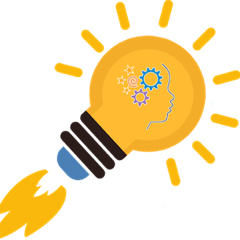 Project Time
Project Time
Astronaut Adventures
Where did the astronaut make a crash landing? What clues will you find in the ecosystem that will help you solve the mystery? Follow along with Astronaut Adventures to engage in hands-on literacy, science and math learning at home. If you’re new, start at #1 (scroll the slider to the right to get started) and move from right to left.

NEW Astronaut Adventure #21
Mission accomplished!
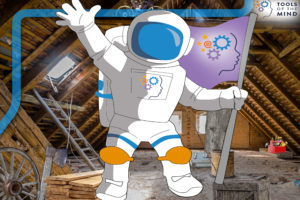
Astronaut Adventure #20
Engineering in an old barn.
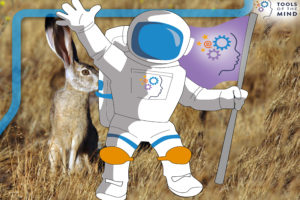
Astronaut Adventure #19
A friendly jackrabbit hops up.

Astronaut Adventure #18
Where should the lost astronaut go now?

Astronaut Adventure #17
The astronaut makes it to the summit, the very top of the mountain!

Astronaut Adventure #16
What’s all this ice?

Astronaut Adventure #15
The astronaut climbs the mountain – halfway up!

Astronaut Adventure #14
How do bison stay warm in this cold weather?

Astronaut Adventure #13
Is that…snow?

Astronaut Adventure #12
Mountains in the distance.
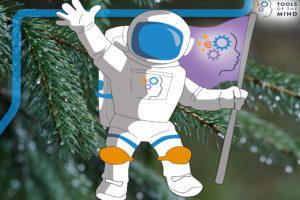
Astronaut Adventure #11
Rainy day engineering.
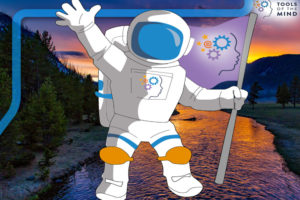
Astronaut Adventure #10
Building a shelter for the night.
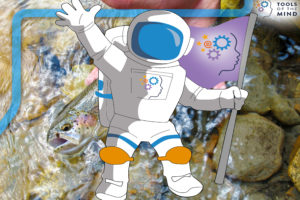
Astronaut Adventure #9
The lost astronaut has caught a fish!
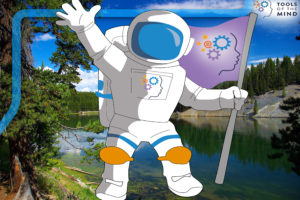
Astronaut Adventures #8
Engineering a tool to catch fish.

Astronaut Adventure #7
The astronaut hikes to the river.

Astronaut Adventures #6
Trees and bears – this must be a forest ecosystem!
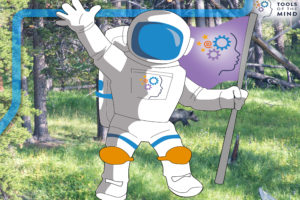
Astronaut Adventures #5
In the distance, the lost astronaut sees movement — is it a predator?

Astronaut Adventures #4
Can teeth help us guess what kind of animal lives in this ecosystem?

Astronaut Adventures #3
Mysterious footprints on the ground—what kind of animal made these?

Astronaut Adventures #2
Where on Earth has this lost astronaut landed?
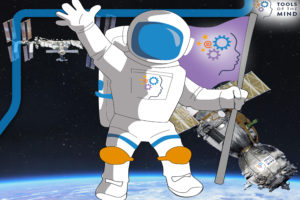
Astronaut Adventures #1
Destination: Earth!
Supporting Children’s Writing
In Tools classrooms, writing begins with drawing to help the child plan and remember the message they wish to write. Then, children begin writing words using estimated spelling. This process starts with children writing only the first letter sound they hear in a word. Gradually, children write both beginning and ending letter sounds, and then they begin hearing and writing middle sounds as well. Eventually, children start to apply the conventional spellings they’ve learned as they write. What’s important at this stage is to encourage children to write the sounds they hear. Writing is a powerful tool for learning letter sounds that boosts children’s phonics knowledge for reading. Take a look below for examples of what children’s writing may look like at these different stages.

Writing Example 1: “Jack and Annie were swimming in the dark moat.”
When children begin writing…
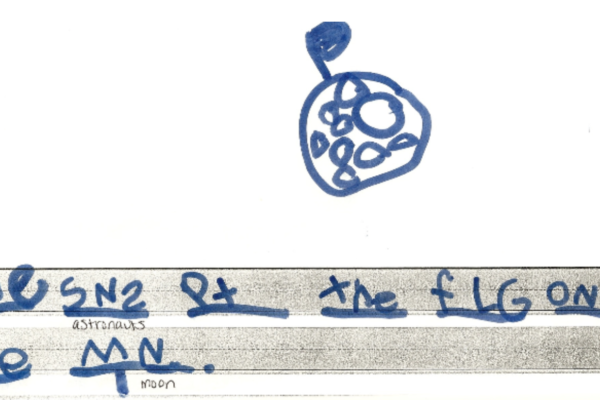
Writing Example 2: “The astronauts put the flag on the moon.”
As children’s writing continues to develop…
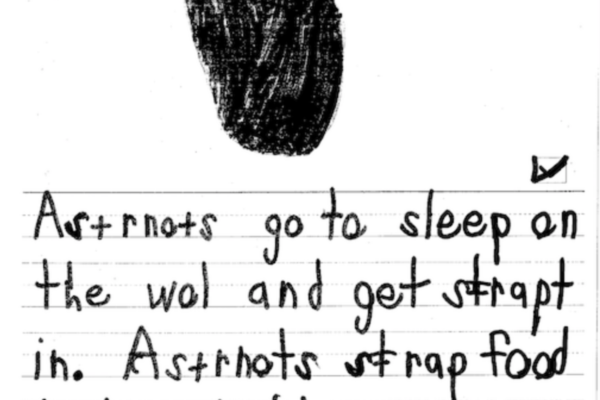
Writing Example 3: “Astronauts go to sleep…”
The complexity of children’s writing continues to grow…
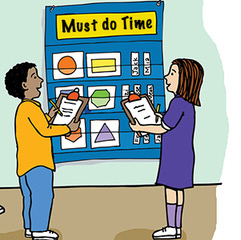 Must Do Time
Must Do Time
Have your child choose 1 Literacy and 1 Math activity to do each day. Literacy choices include reading a book on PowerTools and playing a I Have—Who Has? literacy game online. Math choices include doing an Astronaut Math problem from Astronaut Adventures, playing a game like Sum It Up, or playing an I Have—Who Has? math game online.
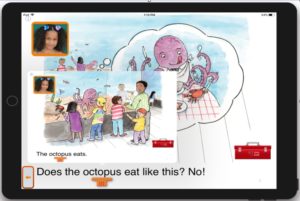
Read with PowerTools!
Using an iPad, your child can continue to enjoy PowerTools books from home!

I Have—Who Has? Literacy & Math Games
Using a computer, tablet or smartphone, your child can now enjoy familiar I Have—Who Has? Games from home!
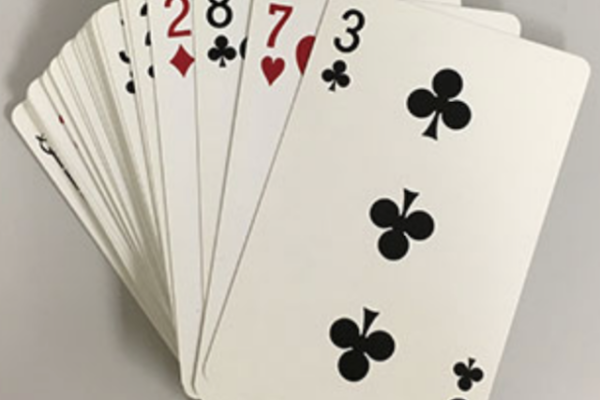
Sum It Up Addition Card game
Have fun practicing addition with this card game!

Astronaut Adventures Math
Find the link to Astronaut Adventures Math problems here!
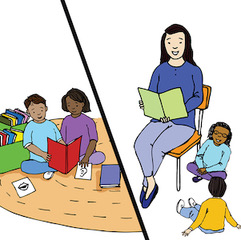 Book Time
Book Time
Anytime is a good time to read a book! Read aloud to your child, or have your child read aloud to you. If you aren’t available to read a book, audio books and videos of books read aloud are other options. If an adult or older child isn’t available for your child to read to, your child can read to stuffed animals, or make a video of their reading to share with you later. Your child will be developing important language, decoding and book handling skills as they enjoy books!
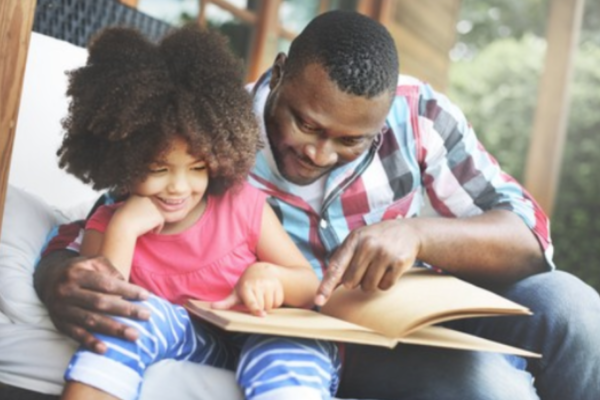
Building Story Comprehension
Focus your child’s attention by asking a comprehension question before reading aloud.

Have your child read to YOU!
Try this: Have your child read to YOU! Your child can use the pictures to “read” the story, or to retell a familiar story.
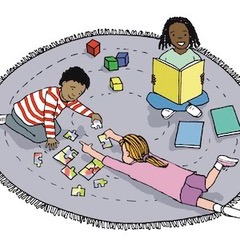 Choice Time
Choice Time
Offer a variety of hands-on activities your child can do fairly independently. Depending on your child and the materials you have at home, this might include drawing with crayons, building with blocks or LEGO, doing puzzles, stringing beads, working with playdough, etc.

Build a model castle!
Calling all knights and royalty (and Kindergartners who dramatized The Knight at Dawn)!

Marble Run Fun
With a couple of marbles and some simple marble runs, your child is in for a lot of fun!

Playdough Fun
Make your own playdough!

Shadow Puppets!
Experiment with light…act out your favorite story!

Write a letter to a friend!
Yes…snail mail!

Choice Time Manipulatives
Offer a variety of manipulatives such as LEGO and…